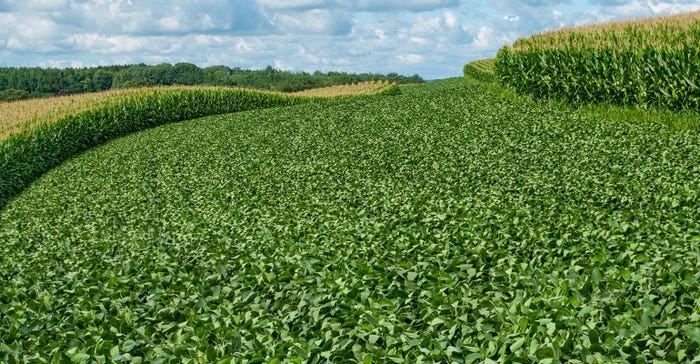
USDA says the check is in the mail – and most growers will find it smaller, too.
The agency earlier this week announced it is issuing around $8 billion in payments for the 2016 crop marketing year under its ARC and PLC programs. The first county-level breakdown of those payments for corn and soybeans confirms warnings we first issued more than a year ago. Final payments for both crops turned out even less than we forecast because average cash prices were higher than earlier estimates.
Two factors combined to lower ARC payments for 2016. First, benchmark prices used in payment formulas were lower – they’re the “Olympic” average of the five preceding years, tossing out the low and high years. For corn that price dropped from $5.29 to $4.79. For soybeans the decline was from $12.27 to $11.87. The increase in Olympic yields used to generate benchmark revenues increased, but less than the big gains most farmers produced so their actual revenues rose faster than the program’s protection.
As a result, around 29% of the counties in the corn program saw increased payment rates, while 63% were lower and 8% were unchanged. All told, 21% of the counties covered by the data release received nothing for corn, slightly higher than occurred in 2015. Most counties in the heart of the Corn Belt saw lower payments.
Most growers received little or nothing from the ARC program for their 2014 soybeans. Payments increased in 2015 but fell again in 2016. The number of counties with no payment more than doubled, to 59%. Growers in 17% of counties received higher payments, while 65% of counties received less, and 18% were unchanged. Growers on the fringes of the main production area were more likely to receive a payment, while those in the Midwest got skunked.
Those percentages are based on the averages for counties classified as “all” acreages – without breakdowns for irrigated and non-irrigated maps. We’ve created a gallery of county level maps that show trends for all three categories, including how 2016 payments compare to 2015. The charts don’t reflect impact of cuts mandated by Congressional budget sequestrations.
We’ve created interactive maps to show payments for each county and the change from 2015 payments. Click the marker to find out details, including how the payments were calculated for the county. Click the box in the upper left-hard corner to bring up an index that includes tabs for irrigated and non-irrigated counties.
About the Author(s)
You May Also Like




